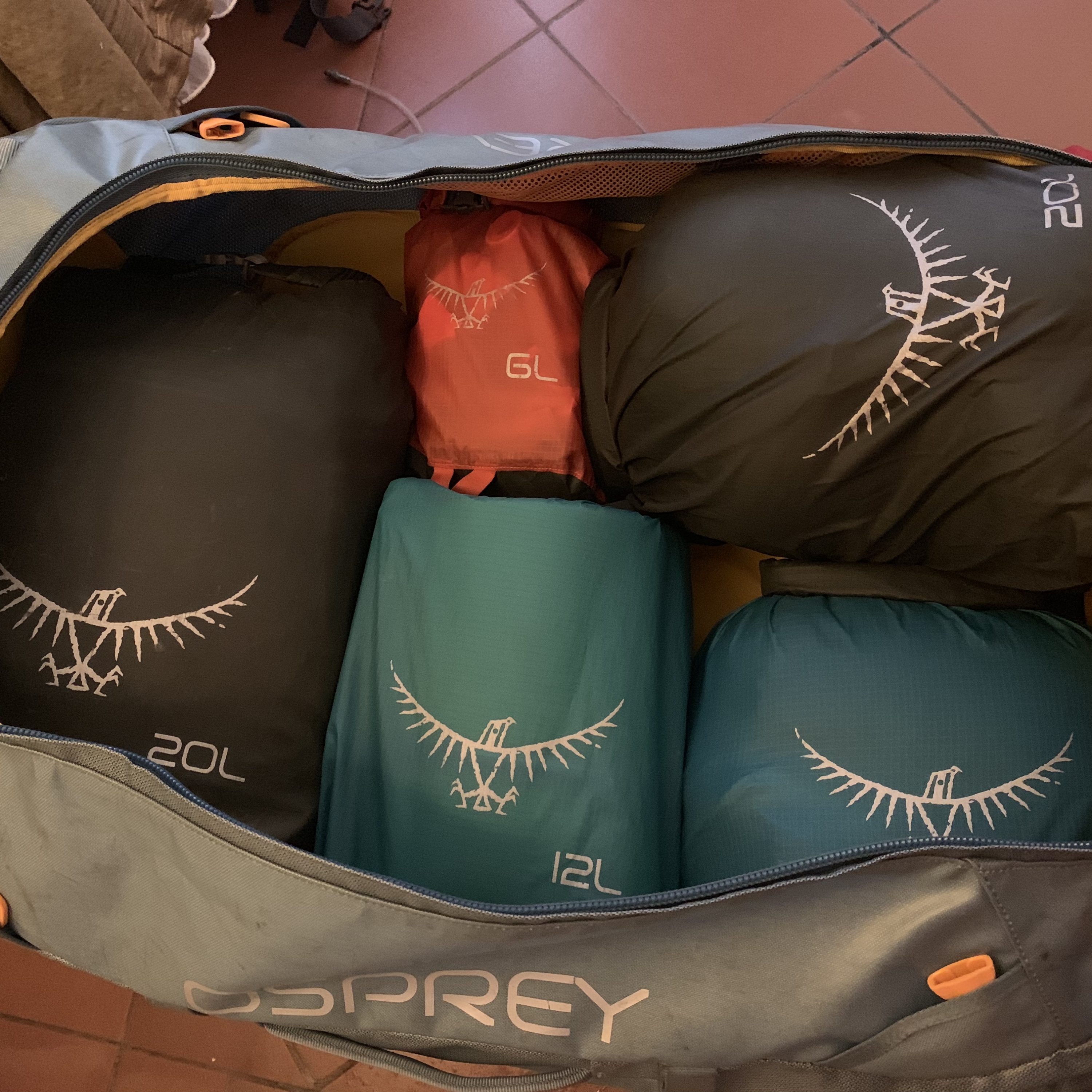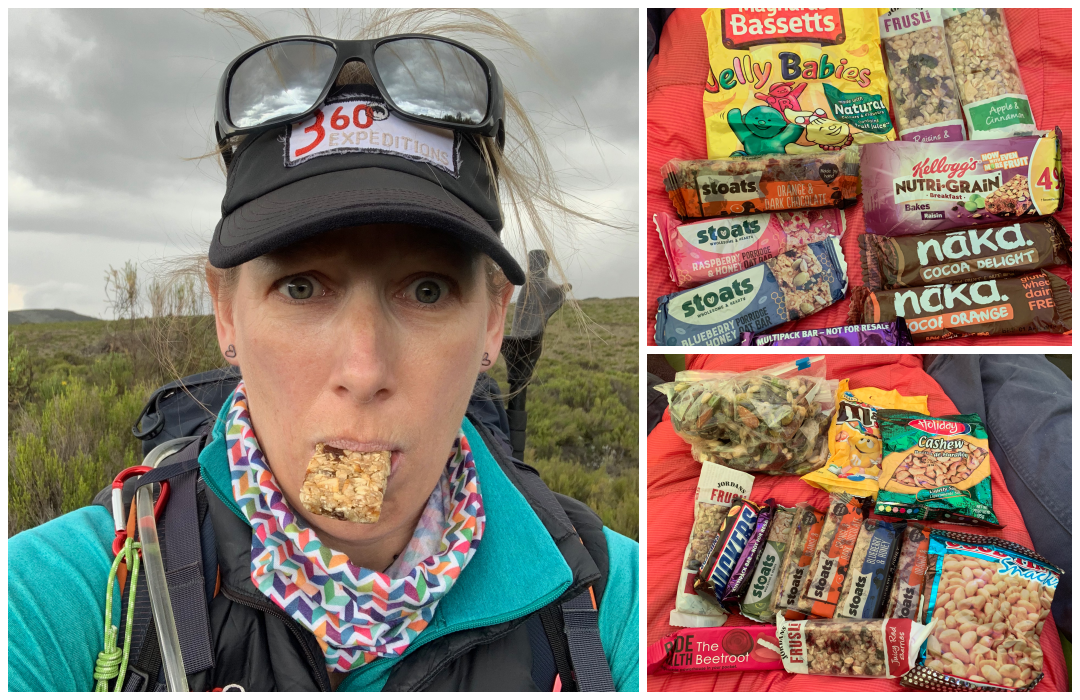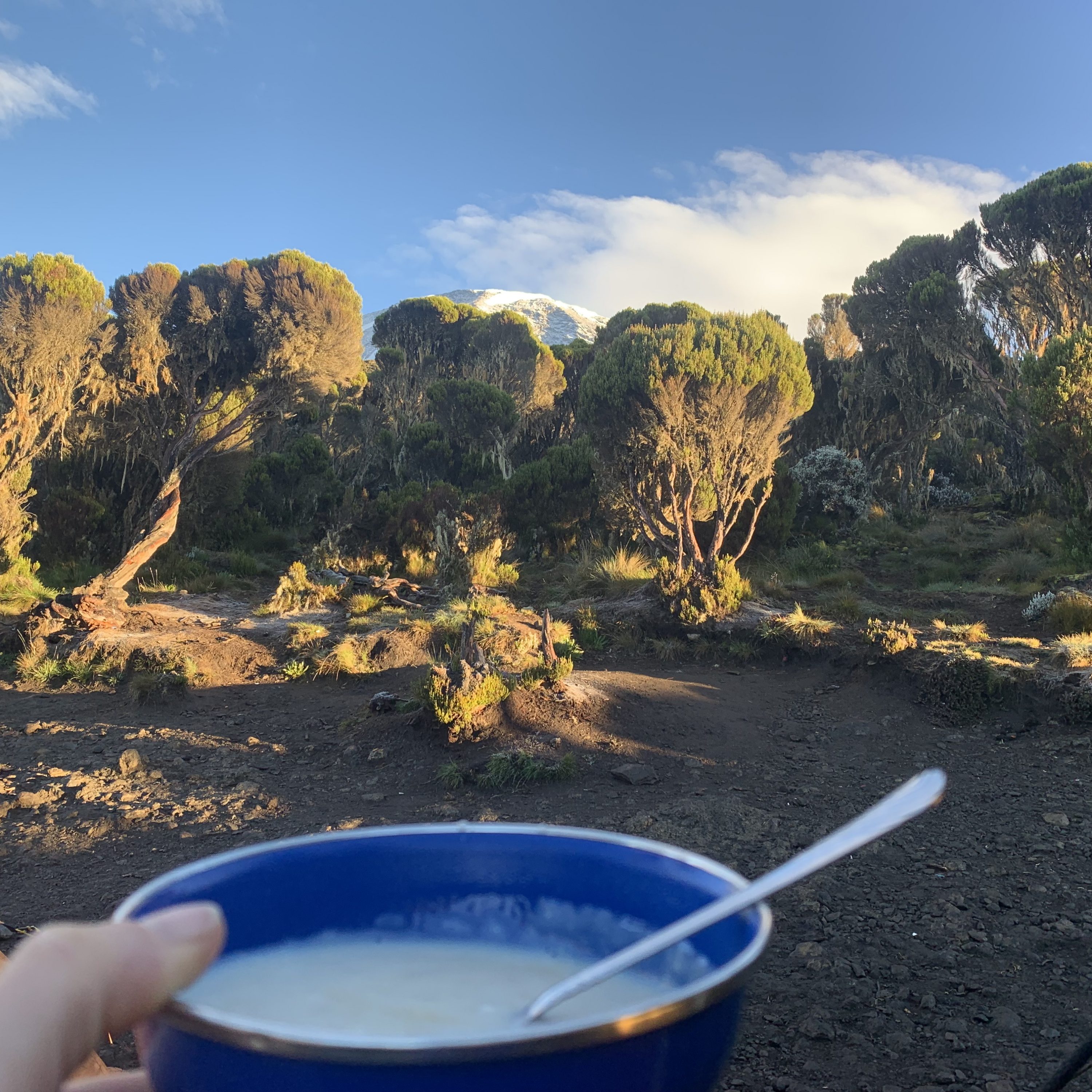Looking to take the leap and sign up to climb Kilimanjaro? Here are a few pointers to make your journey to the Roof of Africa a little easier (it’s all relative!)
I have now led 32 expeditions on this mighty mountain – among others around the world – and every time I head out to Tanzania I simply cannot wait to get there! Every time I head home, I cannot wait to go back. This expedition is not just about getting to the top and standing by that iconic sign, it’s about the whole journey, as corny as that sounds. It’s about the absolutely awesome local crew, your fellow trekkers, the highs and lows, the amazing views, the singing, the dancing and the Milo!
There are many little hints and tips that you’ll be given on the mountain but here are a few essentials to get you going.
1 – Sign up!
Yup, sounds simple but procrastination is a great art form and I’ve heard some saying that they’ve delayed signing up by years because they didn’t think they were capable. Trust me, you are! The hardest part is hitting that button on the website and committing but it’s the best minute of your day and will lead you onto the run up to Kili and then onto the mountain itself and it is a minute I promise you, you won’t regret.
2 – Read ALL of the information we send you
And read it again and again! There is a whole load of really useful info in the FAQs that we send you and many questions have already been answered. But by all means, if you have any additional questions, let us know – we love hearing from you!
3 – Kit
It’s also worth pointing out that each company has a slightly different twist on what needs to be taken – but I would always go with the kit list that the company you’ve signed up with sends you. Print it out and when you are packing a few days before you head off, tick off every item to double check you have everything. Oh, and please bring waterproofs even if the weather forecast says wall to wall sunshine for 7 days! Kilimanjaro has its own micro climate and when it rains, its can rain hard!
There are many places where you can obtain kit and it doesn’t have to be brand new. Hiring kit, such as a good sleeping bag, is very cost effective. Buying from eBay or Outdoor Gear Exchange on Facebook is also a great way of getting hold of good pre-loved kit that won’t cost the earth. Comfy boots are hugely important so do spend time getting a good sturdy pair fitted (our friends at Cotswold Outdoors are great at boot fitting – and all our trekkers and climbers are eligible for a 15% discount!)
Although we do place your kit bag in a sturdy outer bag for the porters to carry it onto the next camp, do also make sure that your kit is snugly wrapped in dry bags or sturdy rubble sacks. Very few kit bags are waterproof (the stitching is a little leaky) unless they are advertised as ‘waterproof’ rather than being weather proof. Soggy kit at the end of a hard day is not that inviting!

4 – Get fit but be the tortoise!
Yes, I know, it sounds obvious and we do send you a great training programme – but some people can be rather ostrich-like and pretend that being fit doesn’t matter. Being as fit as you can be will also ensure that you are more mentally prepared. We do understand that everyone leads busy lives, but you need to prepare your body to walking 7 days in a row and in challenging terrain. You will ‘only’ be walking on average 6 – 8 miles a day (bar summit night and the last day) but you will spend a good number of hours on your feet with your backpack on so getting used to this over a period of time is key. We don’t expect you to run marathons or be the fastest or fittest, but you should take your own challenge seriously, put in the effort and come physically prepared for what is ahead. You’ll also feel far better for it too, promise!
I say be the tortoise as walking at altitude is all about the long slow burn. There are no prizes for being first at anything up high and it’s as much about your mental attitude as it is about how many miles you have banked in all weathers during your training.
Remember too that trekking at altitude is not rocket science. There are simple steps you can take to lessen the chance of having symptoms of altitude sickness – walking slowly, saving energy, eating well, drinking plenty and not worrying about it. You can’t beat altitude sickness and everyone reacts differently. Being on this challenge is not a competition, so there’s no use comparing yourself to others. Do the right thing for your body and you will have an easier ride up!
5 – Glide like a guide and do the Kili crawl!
Watch the way your local and UK guides walk on the mountain. We are super-efficient with our gait, expending as little energy as possible and saving all of those 1%s which are being banked for summit night. Take small flat steps on steeper ground, baby steps are best. You wouldn’t bound up 10 flights of stairs 2 at a time and expect to be able to do another 10 flights but if you slowly work your way up one step at a time, you’ll get to the top of the 20 flights with more in the tank.
6– Eat – Food is fuel!
You can’t run a car on an empty tank and although your body is an incredible machine and can work for a while without much food, you do need to fuel it properly. Take snacks that you really really want to eat, even if you are not feeling hungry. Please leave the energy and protein specific bars at home, they taste terrible on the mountain and good old flapjacks, nuts and jelly babies (amongst others) are the things your body will love on the mountain.
I always put together a bag of around 8 different snacks at the start of a trip (or before I leave home) and then save them for summit night. I break them up in their wrappers as trying to eat a frozen Mars Bar will have you weeping into your fleecy buff!
The food that we provide you on the mountain is INCREDIBLE! We cater for all types of food allergies but being generally a fussy eater at altitude is not the best way forward. The food is very Western and it’s amazing what our chefs can produce from a 2 ring burner. However, the porridge may not be quite how you make it at home and the toast may not be warm enough when it comes into the mess tent BUT remember it’s still fuel and porridge laced with Milo or toast smothered with peanut butter and honey still tastes amazing and will sustain you for a long time to come.
You may lose your appetite at some point on the trek – don’t worry, it’s totally normal – but do keep on fuelling your body and banking that energy. Feeling nauseous is generally a result of being hungry so suck on a boiled sweet, bite the head off a Jelly Baby or get stuck into your flapjacks, you will feel better for it.

7 – Hygiene – from turd to tongue
Right – now I have your attention again! Hygiene is everything! You don’t want to ruin your trip of a lifetime, or anyone else’s for that matter, by sloppy hygiene and it’s the simple things that can make a big difference. Obviously using alcohol gel helps but washing your hands when hot water is available is also key.
Walking around camp with your shoe laces trailing behind you picking up all sorts of nasties is a quick route to a tummy bug so tuck those laces into your boots and keep them – and your hands – clean.
No sharing! That doesn’t mean you can’t share anything but putting your hands or fingers into plates of popcorn or into someone’s sweet bag is another easy way for those pesky bugs to spread like wild fire. Fork it, spoon it or pour it!
Your constitution will change a little on the mountain, moving up and down the middle part of the Bristol stool chart, so if you are a regular one or two goes a day then get used to things being a little different on the mountain and when you come down too! This is due to travel, altitude, exercise, different food, more water and at the end, after you have spent 7 days with healthy food and plenty of H2O, when you load your body with alcohol and spicy food, remember you guts may not be very happy! Don’t worry, it’s normal and you’ll readjust soon enough.
8– Maji ni dawa nzuri – Water is the best medicine
Drinking more water at altitude is essential to stave off headaches due to dehydration. You’ll be breathing faster and deeper at altitude and as the air is much drier, you’ll become dehydrated very quickly if you don’t replace fluids. Your body also automatically goes into diuresis, so you’ll be peeing more before you know it!
Drinking 4 or more litres of water a day is quite normal, including soups and Milo (not including coffee!) and you’ll need to get used to peeing like a pony. On average, work at ½ ltr a walking hour with at least ½ ltr sipped from when you wake up to before you leave and keep sipping when in camp. It’s boring to pee so much, especially at night, but you’ll benefit from the lack of headaches.
I take a water bottle with a sports cap plus my Osprey bladder so that I have options whilst walking, being in camp and so I’m set for summit night too.
It’s also a good idea to gradually cut down on your caffeine intake and up your water a week or two before you go. Suddenly cutting out caffeine on the mountain if you are a major coffee lover can result in a bit of a headache so be kind to yourself and be prepared.

9 – Get comfortable with being uncomfortable, adventure needs to be adventurous!
Taking on this incredible challenge can contain a huge amount of Type 2 fun, which may not be fun at the time, but you’ll laugh about it all afterwards!
As mentioned previously, it’s all about your attitude and not the altitude. People in a mild or more state of anxiety can act in strange ways and you’ll be experiencing many new firsts. Kilimanjaro for me is very much more normal now and I love living in a tent for 7 days, with just one small bag and I most certainly embrace it rather than wishing there were showers or fluffy duvets. Remember that you’ve paid good money to do this incredible challenge and it comes as a package.
Be honest with your guides, have a hug if you need it, sit on a rock and shed some tears if that helps too. Talking to others in your team often helps hugely as remember, you are all going through this together! Tough is good, don’t fear it, embrace it!!
10 – Post trip blues
A simple way to get over this is to sign up for something else!
Kilimanjaro is a life enhancer, a dream maker, a creator of a new normal. She will test you to the max and some – but you are a lot stronger than you think you are, I promise.
We, the UK guides and our amazing local guides and crew, are there to facilitate your expedition, to advise you of the right things to do, to encourage you all the way, to tell you to suck it up at times with a little tough love, to rub your back if you happen to be sick. To sing with you, to dance with you and to give you the best chance to fulfil your dreams and you, the trekker, the one on your trip of a lifetime, will be there to embrace all that goes on. I promise that you’ll be looked after better than you ever imagined, the highs and the lows, the good and the tough times, the endless carbs, the gallons of Milo or magnitude of maji (water!). Getting to know your fellow trekkers who live very different lives to you, to learn from each other, to merge as a team and to come away with many stories and great memories that will last forever.
Go for it, sign up, you are capable, yes you are!